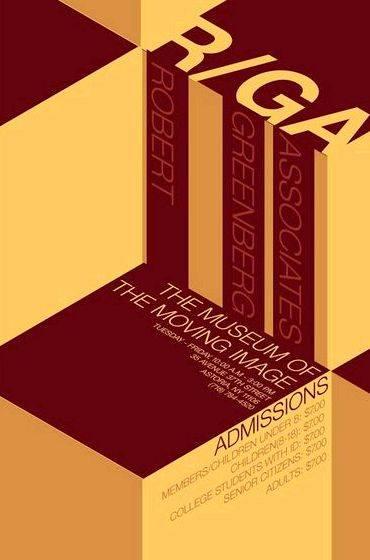

During Middle Childhood
the bones of the body lengthen and broaden. However, ligaments
are not yet firmly attached to bones. This, combined with increasing muscle strength, gives
children unusual flexibility of movement. School-age children often seem like physical con-
tortionists, turning cartwheels and doing splits and handstands. As their bodies become
stronger, many children experience a greater desire for physical exercise. Nighttime growing
pains—stiffness and aches in the legs—are common as muscles adapt to an enlarging skele-
ton
Obesity
a greater-than-20-percent
increase over healthy weight, based on body mass index
(BMI)—a ratio of weight to height associated with body fat.
A BMI above the 85th percentile for a child’s age and sex is
considered overweight,a BMI above the 95th percentile obese
Asthma
the most common—accounting for about one-third ofchildhood chronic illness and the most frequent
cause of school absence and childhood hospitalization—is. in which the bronchial tubes (passages that connect the throat and lungs) are highly sensitive. In response to a variety of stimuli, such as cold weather, infection, exercise, allergies, and emotional stress, they fill with mucus and contract, leading to coughing, wheezing, and serious breathing difficulties.
Avoidance of Unintentional Injuries
As children range farther from home, safety education becomes especially important. Effective school-based prevention programs use extensive modeling and rehearsal of safety practices, give children feedback about their performance along with praise and tangible rewards for acquiring safety skills,and provide occasional booster sessions.

Educating parents is also vital for preventing injuries. One vital safety measure is insisting that children wear protective helmets while bicycling, in-line skating, skate-boarding, or using scooters. This simple precaution leads to a 25 percent reduction in head injury,a leading cause of permanent physical disability and death in school-age children.

Motor Skills during MC
-Running speed increases from 12 feet per second at age 6 to over 18 feet per second at age 12.
-Skipping improves. Sideways stepping appears around age 6 and becomes more continuous
and fluid with age.
-Vertical jump Height jumped increases from 4 inches at age 6 to 12 inches at age 12.
-Standing broad jump Distance jumped increases from 3 feet at age 6 to over 5 feet at age 12.
-Precision jumping and hopping (on a mat
divided into squares) By age 7 children can accurately jump and hop from square to square, a performance that
improves until age 9 and then levels off.
-Throwing speed, distance, and accuracy increase for both sexes, but much more for boys than for girls. At age 6, a ball thrown by a boy travels 39 feet per second, one by a girl 29 feet per second. At age 12, a ball thrown by a boy travels 78 feet per second, one by a girl 56 feet per second.
-Catching Ability to catch small balls thrown over greater distances improves with age.
-Kicking speed and accuracy improve, with boys considerably ahead of girls.

At age 6, a ball kicked
by a boy travels 21 feet per second, one by a girl 13 feet per second. At age 12, a ball kicked by a boy travels 34 feet per second, one by a girl 26 feet per second.
-Batting motions become more effective with age, increasing in speed and accuracy and involving
the entire body.
-Dribbling Style of hand dribbling gradually changes, from awkward slapping of the ball to continuous,
relaxed, even stroking.
Fine Motor Development
Children usually master uppercase
letters first because their horizontal and vertical motions are easier to control than the small
curves of the lowercase alphabet.Legibility of writing gradually increases as children produce
more accurate letters with uniform height and spacing.These improvements prepare children
for mastering cursive writing by third grade.
Children’s drawings show dramatic gains in organization, detail, and representation of
depth during middle childhood. By the end of the preschool years, children can accurately
copy many two-dimensional shapes,and they integrate these into their drawings.Some depth
cues have also begun to appear,such as making distant objects smaller than near ones
Games and Rules
The physical activities of school-age children reflect an important advance in quality of play: Games with rules become common. Children around the world engage in an enormous variety of informally organized games,includ-
ing variants on popular sports such as soccer, baseball, and basketball. In addition to the best-known childhood games, such as tag, jacks, and hop-scotch, children have also invented hundreds of other games, including red
rover,statues,leapfrog,kick the can,and prisoner’s base
Gains in perspective taking—in particular,the ability to understand the roles of several players in a game—permit this transition to rule-oriented games. These play experiences, in turn, contribute greatly to emotional and
social development. Child-invented games usually rely on simple physical skills and a sizable element of luck.As a result,they rarely become contests of individual ability. Instead, they permit children to try out different styles of
cooperating,competing,winning,and losing with little personal risk.Also,in their efforts to organize a game,children discover why rules are necessary and
which ones work well.
Rough and Tumble Play
friendly chasing and play-fighting; they occasionally wrestle, roll, hit, and run after one another,alternating roles while smiling and laughing
Developmentally Appropriate Organized Sports
-Build on children’s interests. Permit children to select from among appropriate activities the ones that suit them best. Do not push children into sports they do not enjoy.
-Teach age-appropriate skills. For children younger than age 9, emphasize basic skills, such as kicking, throwing, and batting, and simplified games that grant all participants adequate playing time.
-Emphasize enjoyment. Permit children to progress at their own pace and to play for the fun of it, whether or not they become expert athletes.
-Limit the frequency and length of practices.
-Adjust practice time to children’s attention spans and need for unstructured time with peers, with family, and for homework. Two practices a week, each no longer than 30 minutes for younger school-age children and 60 minutes for older school-age children, are sufficient.
-Focus on personal and team improvement. Emphasize effort, skill gains, and teamwork rather than winning. Avoid criticism for errors and defeat, which promotes anxiety and avoidance of athletics.
-Discourage unhealthy competition. Avoid all-star games and championship ceremonies that recognize individuals. Instead, acknowledge all participants.
-Permit children to contribute to rules and strategies. Involve children in decisions aimed at ensuring fair play and teamwork. To strengthen desirable responses, reinforce compliance rather than punishing noncompliance.
Previous answers to this question
This is a preview of an assignment submitted on our website by a student. If you need help with this question or any assignment help, click on the order button below and get started. We guarantee authentic, quality, 100% plagiarism free work or your money back.
 Get The Answer
Get The Answer